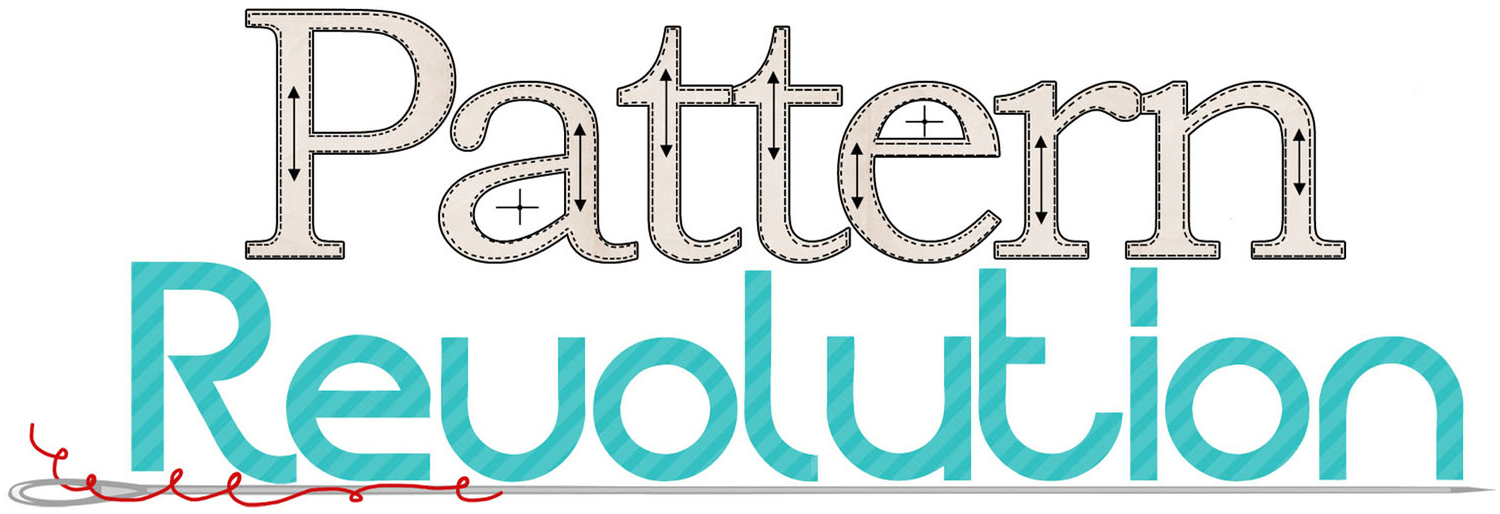Scrap Swap 2017: How to Fabric Weave with Scraps
/As we sew, so shall we have scraps. However, most of us have a hard time getting rid of them and at some point they start to take over our sewing spaces. The Pattern Revolution team gets together every year for a Scrap Swap where a member is assigned a partner to send a package of scraps from their overflowing scrap bin and the recipient is challenged to makes something using them. This year we raised the bar a bit to not only use scraps, but also to create a tutorial for a project out of the scraps. Today, Maryanna is showing us how she used the scraps that she received in the swap to weave a beautiful wall hanging. This technique could be used for many other projects as well: a bag front, details on a pocket or bodice, or a colorful throw pillow. The only limit is the imagination!
Hi! I’m Maryanna from Marvelous Auntie M. Have you seen this wonderful thing called fabric weaving? It can be home decor, you can use it as a design element on a bag or you could probably make a quilt top! There are some really awesome designs out there. I wanted to try my hand at a small embroidery hoop for some wall decor. Most of the tutorials that I found were talking about specific fabric weaving tools. If you are like me and want to make something as soon as you see it, I’ll tell you how to do it without having to wait for any special tools to arrive in the mail. Fabric weaving is a great way to use up some of your larger scraps. By larger I mean 12 inches by 14 inches. For the 3D cube design you only need three fabrics.
To prepare your fabric, cut in strips that are 1” by 12”. Press both long edges in towards the center ¼” so that you end up with a strip that is ½” by 12”. You should have a total of 42 strips, 14 from each fabric.
Next you need to gather your supplies. I used a 6 inch embroidery hoop that I had in one of my many craft tubs. Then I grabbed an Amazon box (any corrugated cardboard box will do but mine are usually from Amazon) to use as my base and a large safety pin for threading the strips. The key to 3D cubes is that the second and third layers are woven in at a 30 degree angle. To help me keep my angles in check, I drew a box and marked 30 degree lines going up from both bottom corners. I used a protractor for this because I don’t trust my eyeball for a 30 degree angle.
Your first layer is just vertical strips right up against each other. The second layer is when you watch your angle. Starting in the bottom right hand corner, weave your second layer in using this pattern: over one, under two, over one, under two...until you get to the edge of your vertical strips. The second strip will stagger by doing under one, over one, under two, over one, under two, over one...until you get to the edge. Third strip is under two, over one, under two, over one...until you get to the edge.
Repeat this pattern with remaining second layer strips. They do make a special fabric weaving tool that you can purchase but I was able to just use a large safety pin to help thread the green strips through the blue strips.
Now comes the third layer. It can seem tricky but it will make sense once you get the hang of it. Starting at the bottom left hand corner, these strips (purple) will be woven under one, over two for the blue layer but they will also be woven under the green layer. The cubes may not be visible to you until you have several third layer strips woven in. I wasn’t able to see the design until I had at least five strips in there. I kept getting confused the way this layer was worded on another tutorial and had to keep looking at the picture. I’m going to try to break down the explanation of the third layer a bit for you.
When you go under, you go under both blue and green, when you go over, one will be over blue/under green (purple not visible) and the next will be over both so that purple is visible, then go back under both blue and green then over blue/under green then over both again and repeat. You will stagger these strips just like you did with the second layer. Weave in all of your third layer strips and then check the size to make sure it will fit your project. In my case, I just laid the embroidery hoop on top.
The next step is to remove all of the pins and carefully transfer your weave over to your ironing board and place it face down. Grab a piece of fusible woven interfacing and apply to the back. You could also lay the interfacing out on your base while you are pinning but this design has a pretty tight weave so I was able to slide it right off of the cardboard and on to the ironing board with no issues. I didn’t want to put the interfacing on my base so that I could make sure I was keeping my strips woven in at the correct angle. Use your iron and press the back to attach the interfacing then flip it over and press the front.
Put it in your embroidery hoop and finish the edges however you like. I trimmed around the edges of mine with pinking shears. You could also fold under and glue the edges down to the back.
And that's it! I hope you enjoyed this no sew project and give it a try.
Looking for more scrap inspiration? Check out some of our previous scrap swap projects!






















Learn how to use your scraps to make these eco-friendly and fun fabric reversible bowl covers.